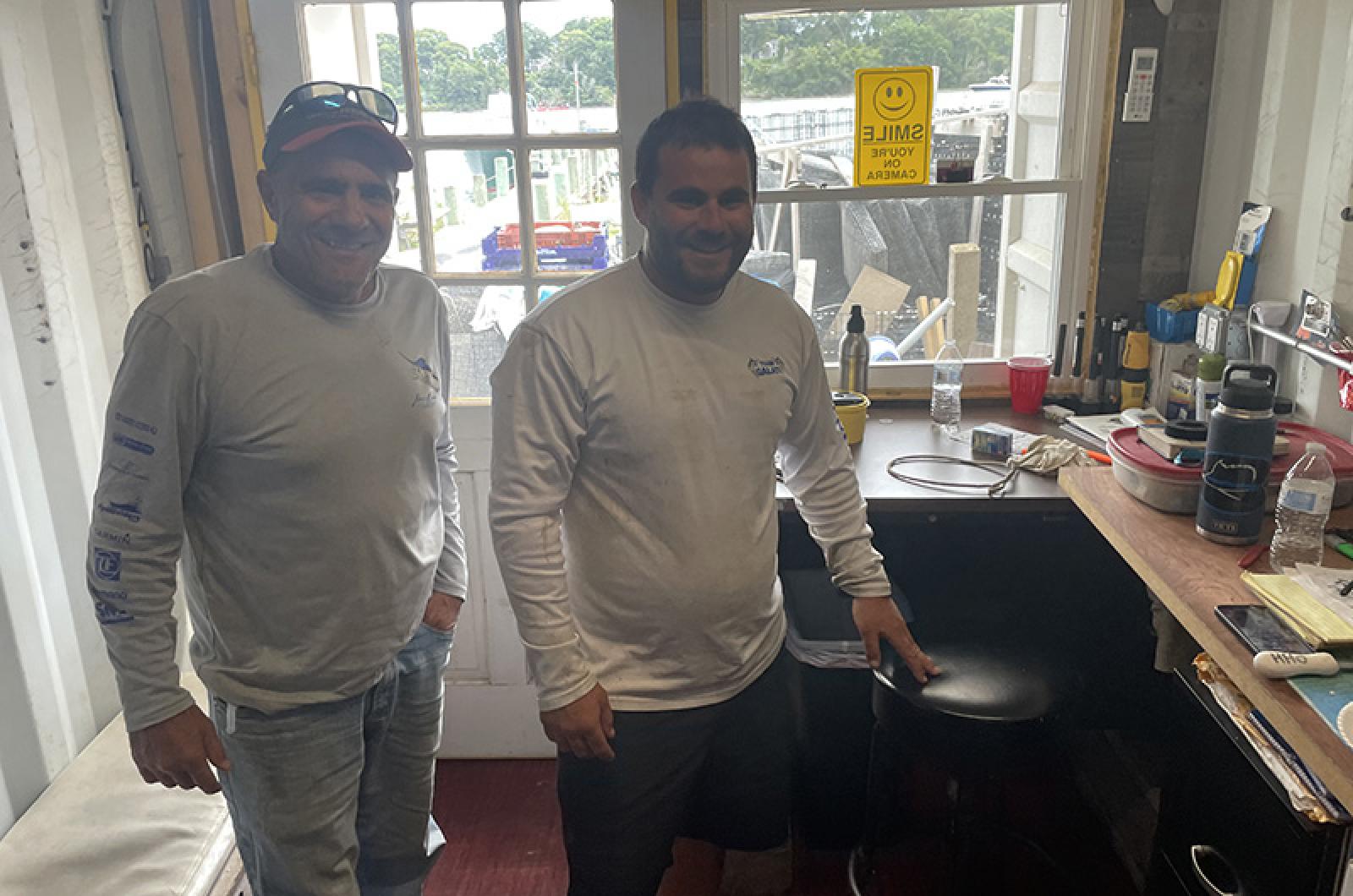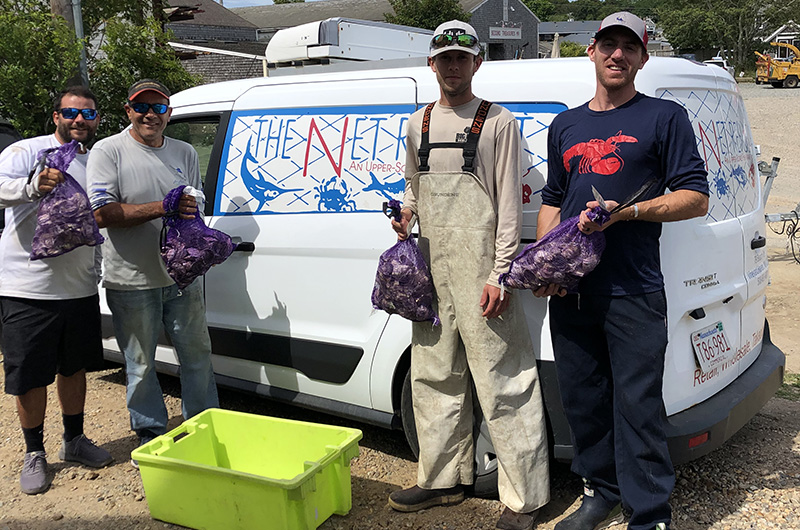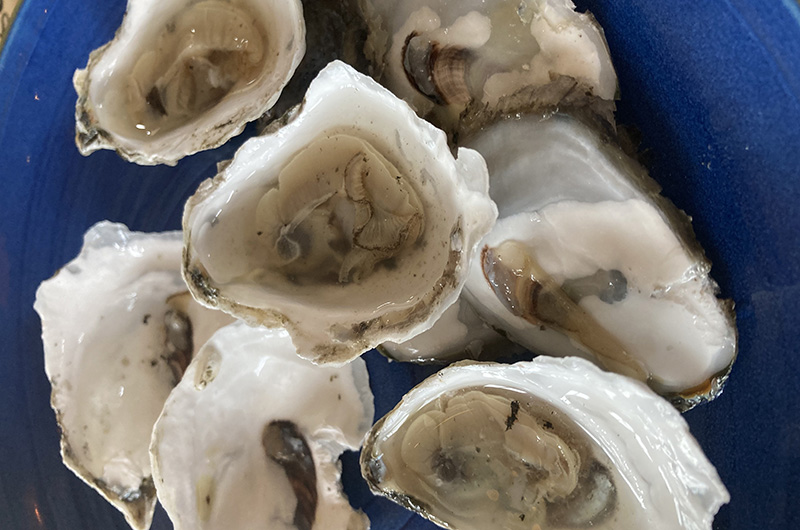On Tuesday, after over a year of operation, from their aquaculture farm on the Tisbury side of Lagoon Pond, Jeff and Tony Canha of Husselton Head Oysters sold their first crop at The Net Result in Vineyard Haven. We celebrated by eating a few oysters.
“Our motto is ‘raised with love from sea to slurp,” Jeff said.
The oysters aren’t big but they’re nice. The way wines are representative of the vineyards in which their grapes are grown, oysters take on the particular flavors of the spots where they are planted underwater in wire cages. With every new aquaculture farm on the Island, growers are investigating the flavors of another location.
The oyster meats were pale in color, the texture was very even and I couldn’t help thinking the flavor was reminiscent of that first breath of clean wind on a summer morning beside a salt marsh. Wine people use the word terroir to describe flavors unique to a glass of wine. Oyster people call the signature discernible in the oyster’s flavor its merrior.
“These are Bettercups. They are from Island Creek in Duxbury,” Jeff said.
The Canhas buy all of their oyster seed from off-Island hatcheries. They come in rolls of hundreds of thousands, wrapped in plastic in sausage-like shapes. When they arrive, the largest of the seeds, also called cultch, are less than two mm across.
Some of the seed that arrived late this spring has already grown into two-inch oysters.
“We’ve got two-month old seed that’s bigger than 14-month old seed,” Tony said.
Tony is Jeff’s son. Together they are figuring out how to operate a new business in a new industry somewhere nobody’s ever done it. Recent success is ennobling. But it comes alongside humbling challenges. Two-hundred thousand oyster seeds, everything they received from one of their suppliers, never grew and probably arrived sick or dead.
“If we hadn’t lost that seed, all this gear would be out there,” Jeff said, pointing to spare cages stacked up beside the trailer that serves as the Husselton Head office.
The Canhas have space in their allotment to keep all those cages in the water.
“We just got approved Wednesday for a little expansion over here and in the outer harbor,” Jeff said.
The distinctive spot in the Lagoon where their oysters are growing is a cove underneath the bluff where the Martha’s Vineyard Shellfish Group’s Shellfish Hatchery operates. Alongside oysters, the Canhas are growing scallops in cages. Scallops from seed spawned in the hatchery 100 yards away are growing better than seed from off-Island.
“They are definitely fifty per cent bigger,” Tony said of the locally spawned scallops.
Without the work of the MV Shellfish group it would be impossible to know how scallops from local parents would fare against seed from off-Island nurseries. Like any crop, the faster scallops are grown, the less chance you leave for pests and diseases to find a foothold.
Scallops like to move around in a way oysters don’t appreciate. Confined in cages, they are extremely vulnerable, especially in winter when their metabolism slows down and they live off stored energy.
“We’re gonna sell the whole crop between Thanksgiving and Christmas,” Jeff said.
In order to ensure that the wild population continues to grow, there are size limits on wild-harvested scallops. Because scallops grown in cages have never been a part of the wild population, you can harvest them any time. If people were used to cooking small, super-sweet scallops, the proportions of the crop that are destroyed over winter would make it into peoples’ kitchens as food.
“We just have to educate the consumer,” Jeff said.
Raising a crop that balances the nutrients in the Island’s sensitive waterways to provide distinctive healthy food is the Canhas’ dream.
“It’s been a struggle,” Jeff said.
But before I left on Tuesday he made sure I understood he wasn’t dismayed by setbacks.
“This is a calling,” Jeff said.









Comments (3)
Comments
Comment policy »